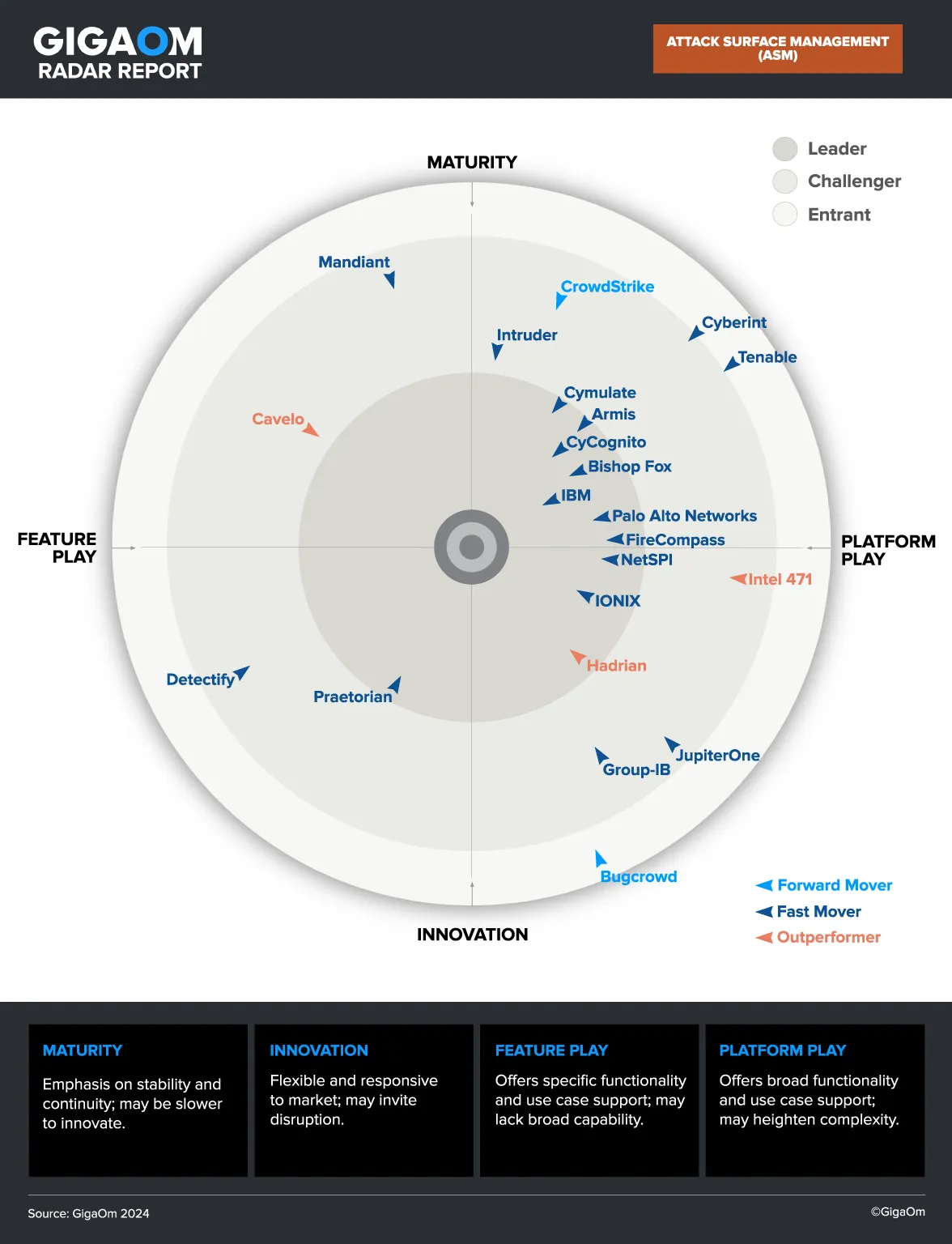What Is Vulnerability Assessment?
Vulnerability assessment is the process of identifying, quantifying, and prioritizing vulnerabilities in a system. It provides valuable insights into potential weaknesses that can be exploited by malicious actors and presents strategies to mitigate these risks. This process is not limited to IT systems; it also applies to physical locations, personnel, and procedural vulnerabilities.
The vulnerability assessment process typically involves the use of automated tools to scan systems for known vulnerabilities. In a modern IT environment it is important to scan not only systems managed by the organization but also external systems such as cloud services and third party systems.
A vulnerability assessment is not a one-time event. It is an ongoing process that must be revisited regularly to ensure that the system remains secure. This is because new vulnerabilities are continually being discovered, and existing ones might evolve or become more significant due to changes in the system or the environment it operates in.
This is part of an extensive series of guides about information security.
Why Is Vulnerability Assessment Important?
Identification of Security Weaknesses
Security weaknesses could be due to outdated software, misconfigurations, or lack of security controls. Without a vulnerability assessment, these issues could remain unnoticed, providing an open door for attackers to exploit.
Identifying security weaknesses allows you to take preemptive action to fix them before they can be used against you. It provides a clear picture of your security posture and helps you understand where your defenses may be lacking.
Prioritization of Threats
Not all vulnerabilities carry the same level of risk. Some may pose a minor threat, while others could lead to significant data breaches or system down times. A vulnerability assessment helps in prioritizing these threats based on their potential impact on your organization.
This prioritization is crucial in determining how resources should be allocated to address these vulnerabilities. It ensures that the most critical threats are dealt with first, thereby reducing the potential damage they could cause.
Compliance with Regulations
Many organizations need to comply with regulations or industry standards. These regulations often require organizations to conduct regular vulnerability assessments. By conducting a vulnerability assessment, organizations demonstrate compliance, which can prevent fines and penalties and can build trust with customers and partners.
Minimizing Internal and External Attack Surfaces
A primary goal of vulnerability assessments is to reduce attack surfaces. Vulnerability assessment involves identifying and minimizing all the possible points in an organization's network—both internal and external—where unauthorized access can occur. This is vital for decreasing the likelihood and impact of security breaches.
Internally, the focus is on securing the organization's own network and systems. This includes ensuring robust security protocols for servers, network devices, and end-user devices like laptops and smartphones. Regular updates, stringent access controls, and consistent monitoring are key strategies to mitigate risks from within the organization.
Externally, the goal is to safeguard public-facing elements like websites and external network connections. Continuous vulnerability assessments of these components are crucial to identify and address potential threats from external sources.
The Vulnerability Assessment Process
Here are the general steps involved in vulnerability assessment:
1. Discover IT Assets
The initial step in the vulnerability assessment process is the discovery of IT assets. This involves identifying and cataloging all technology resources owned or used by the organization, including hardware like servers and networking equipment, software applications, and cloud-based assets.
2. Identify Vulnerabilities
After discovering assets, the next step is to identify the vulnerabilities present in these systems. This is typically done using automated tools that scan your network and systems for known vulnerabilities. This process may also involve manual techniques such as reviewing system configurations, testing security controls, and even simulating potential attacks to uncover weaknesses.
3. Document the Vulnerabilities
Once vulnerabilities have been identified, they need to be documented. This documentation should include details about each vulnerability, such as its location, severity, and potential impact. This information is crucial in prioritizing the vulnerabilities and developing a plan to address them. The documentation can also be used for future assessments and audits.
4. Create Remediation Guidance
After documenting the vulnerabilities, the next step is to create guidance for remediation. This involves developing a plan of action to address each vulnerability, based on its priority. The remediation plan should include steps to fix the vulnerability, as well as measures to prevent similar vulnerabilities in the future. This could involve patching software, updating configurations, or implementing new security controls.
Vulnerability Assessments vs. Vulnerability Scanning vs. Penetration Testing
A vulnerability assessment is a comprehensive process that includes identifying, documenting, and providing guidance for remediating vulnerabilities. It is a proactive approach to securing an organization's systems and networks.
Vulnerability scanning is a part of the vulnerability assessment process. It involves using automated tools to scan systems for known vulnerabilities. While it can identify potential weaknesses, it does not provide the in-depth analysis or remediation guidance of a full vulnerability assessment.
Penetration testing, or pen testing, is a more aggressive approach. It involves simulating cyber attacks to exploit vulnerabilities and test the effectiveness of security controls. While it can reveal how an attacker might breach your systems, it does not provide the comprehensive view of your security posture that a vulnerability assessment does.
Learn more in our detailed guides to:
- Vulnerability scanning (coming soon)
- Vulnerability scanning vs penetration testing (coming soon)
What Is Vulnerability Assessment and Penetration Testing (VAPT)?
Vulnerability Assessment and Penetration Testing, or VAPT, is a comprehensive approach to cybersecurity that combines the proactive identification of vulnerabilities (the vulnerability assessment) with an active test of the system's defenses (the penetration test). The goal of VAPT is to provide a complete picture of the system's vulnerabilities and how they can be exploited by attackers.
Think of vulnerability assessment as the first step in this process. It's about finding the weak points that could be exploited by attackers. This involves using a variety of tools and techniques to systematically examine the system for known vulnerabilities, such as outdated software, improper configurations, or weak passwords.
Once the vulnerability assessment is complete, the next step is penetration testing. This involves attempting to exploit the identified vulnerabilities to gain access to the system or data. The goal is not to cause harm, but to understand how an attacker might exploit the vulnerabilities and what the potential impact could be.
The results of VAPT can provide valuable information to help organizations prioritize their security efforts, fix identified vulnerabilities, and improve their overall security posture.
Types of Vulnerability Scans
Vulnerability assessments can include various types of vulnerability scans. The most common are:
Network-Based Scans
Network-based scans are used to identify vulnerabilities in a network's infrastructure. This can include routers, firewalls, switches, and other network devices. These scans can help identify outdated firmware, improper configurations, and other potential weak points in a network's defenses.
Host-Based Scans
Host-based scans focus on individual systems or devices. These scans can identify vulnerabilities in operating systems, installed software, and system configurations. For example, a host-based scan might identify that a system is running an outdated version of an operating system that has known vulnerabilities.
Wireless Network Scans
Wireless network scans are designed to identify vulnerabilities in wireless networks. This can include issues with encryption, authentication, and network configuration. Wireless networks can be a particular target for attackers, as they often provide an easier point of entry than wired networks.
Application Scans
Application scans focus on identifying vulnerabilities in specific applications. This can include web applications, mobile applications, and other software. Application scans can identify issues such as cross-site scripting vulnerabilities, SQL injection vulnerabilities, and other application-specific issues.
Database Scans
Database scans focus on identifying vulnerabilities in databases. This can include issues with database configuration, outdated database software, improper access controls, and vulnerability to injection attacks. Given the sensitive nature of the data often stored in databases, these scans are a critical part of any comprehensive vulnerability assessment.
Challenges in Vulnerability Assessment
Here are some of the key challenges organizations encounter when setting up a vulnerability management program:
Managing False Positives and Negatives
A false positive in a vulnerability assessment refers to a situation where a vulnerability that doesn’t actually exist is flagged by the system. On the other hand, a false negative is when a real vulnerability goes unnoticed during the assessment.
Both occurrences can potentially lead to negative consequences. False positives can lead to a waste of resources as teams may end up spending precious time and effort resolving non-existent threats, and eventually lead to alert fatigue. False negatives mean that a real vulnerability is overlooked during the assessment, which can leave the system exposed to potential cyber-attacks.
Keeping Up with New Vulnerabilities and Threats
The cybersecurity landscape is ever-evolving, with new vulnerabilities and threats cropping up almost daily. This rapid evolution makes keeping up with these new threats and vulnerabilities a significant challenge for security professionals.
In order to keep up with threats, security teams must regularly update vulnerability assessment tools and the threat intelligence they rely on. Over time, they must adopt new tools that can scan new aspects of the IT environment. For example, organizations now have to incorporate tools that can scan for vulnerabilities in cloud and containerized environments.
Scanning Complex Hybrid Environments
Complex hybrid environments, which blend on-premises, cloud, and containerized platforms, present unique challenges in vulnerability assessments. The diversity in these systems, from legacy to modern architectures, makes it difficult to devise a unified scanning strategy. Vulnerability assessment tools must be equipped to handle diverse architectures, and maintain an updated inventory of assets across all environments.
Effective scanning of complex hybrid environments requires specialized tools. Automation and orchestration are crucial for regular, comprehensive scans. It is important to take an integrated approach, collaborate with teams managing different parts of the environment, and implement continuous monitoring to swiftly identify and address new vulnerabilities.
Best Practices for Vulnerability Assessment
While executing a vulnerability assessment does come with its challenges, adopting certain best practices can significantly ease the process and increase its effectiveness.
1. Regular and Consistent Scanning
Vulnerabilities can arise at any time due to various factors, such as the introduction of new software or hardware, configuration changes, or the discovery of new threats. Thus, conducting regular and consistent vulnerability assessments is crucial to ensure that your systems remain secure.
2. Customized Scanning Profiles
Organizations should develop customized scanning profiles that are tailored to their specific systems and applications. This approach allows for a more accurate and comprehensive assessment, as it focuses on the vulnerabilities that are most relevant to the organization's infrastructure.
By customizing scanning profiles, organizations can prioritize vulnerabilities based on their severity and potential impact. This enables them to allocate resources effectively and address the most critical vulnerabilities first, minimizing the overall risk to their digital landscape.
3. Keep Inventory Up to Date
Keeping an up-to-date inventory of all systems, applications, and devices is also essential. This allows you to know what is in your environment and understand the potential vulnerabilities each element may have. An up-to-date inventory also enables you to prioritize the vulnerabilities based on the criticality of the system, application, or device. Automated discovery is key to inventory management in modern IT environments.
4. Involve Cross-Functional Teams
Effective vulnerability assessment requires collaboration across various departments within an organization. Involving cross-functional teams ensures that all aspects of the organization's operations and infrastructure are considered during the assessment. This approach not only helps in identifying vulnerabilities more comprehensively but also in implementing remediation strategies more effectively.
Cross-functional involvement typically includes IT, security, operations, software development, and business units. Each team brings its own perspective and expertise, contributing to a more thorough understanding of the organization's vulnerabilities. For instance, the IT team can provide insights into the technical aspects, while business units can help assess the potential impact of vulnerabilities on business operations.
5. Compliance and Policy Alignment
Vulnerability assessment should align with industry standards, regulations, and organizational policies. Organizations must ensure that their assessment practices meet the requirements set forth by regulatory bodies and industry best practices. This includes conducting assessments at regular intervals, maintaining documentation of the assessment process, and implementing remediation measures within specified timeframes.
By aligning vulnerability assessments with compliance and policy requirements, organizations demonstrate their commitment to maintaining a secure environment and safeguarding sensitive information.
6. Automated Scanning Tools with Manual Oversight
Automation plays a crucial role in vulnerability assessments, allowing organizations to scan a large number of complex systems efficiently. Automated scanning tools can identify a wide range of vulnerabilities and provide rapid results. However, it is essential to have manual oversight in the assessment process to validate and verify the findings of automated tools.
Manual oversight can help identify false positives and ensure assessments are valid. It also allows for a deeper understanding of the vulnerabilities and their potential impact, enabling organizations to make informed decisions regarding remediation strategies.
7. Incident Response Plan Integration
To ensure a proactive and effective response to vulnerabilities, organizations should integrate vulnerability assessment findings into their incident response plans. In particular, vulnerabilities that cannot be remediated due to complexity or technical constraints, and currently represent a risk, should be shared with incident responders.
By incorporating vulnerability assessment results into incident response procedures, organizations can prioritize and respond to threats promptly. This integration ensures a coordinated and efficient response, minimizing the potential impact of security incidents on business operations.
Vulnerability Management with CyCognito
The CyCognito platform addresses today’s vulnerability management requirements by taking an automated multi-faceted approach in identifying and remediating critical issues based on their business impact, rather than focusing on the generic severity of the threat alone. To do this you need a platform that is continuously monitoring the attack surface for changes and provides intelligent prioritization that incorporates organizations context.
The CyCognito platform uniquely delivers:
- A dynamic asset inventory with classification of the entire external attack surface, including exposed on-premise and cloud-hosted assets like web applications, IP addresses, domains and certificates, eliminating the need to rely on outdated or incomplete information from collaboration tools, spreadsheets, or emails. This approach significantly reduces the burden of tedious, error-prone and costly processes.
- Active security tests on all discovered assets to identify risk. Active testing, including dynamic application security testing, or DAST, uncovers complex issues and validates known issues, with low false positives. Each exploited asset is assigned a security grade based on its criticality to the business.
- Prioritization of critical issues, guiding security teams to focus on the most urgent threats. Our unique risk-based prioritization analysis goes beyond the common vulnerability scoring system (CVSS), and incorporates factors like asset discoverability, asset attractiveness, exploitability, business impact and remediation complexity. Integrated tactical threat intelligence identifies the handful of attack vectors that pose the greatest risk.
- Streamlines communications between remediation teams by providing comprehensive, verifiable evidence for each exploited asset. This evidence includes detailed risk assessments, asset ownership information, and actionable remediation guidance. The platform seamlessly integrates with SIEM, SOAR and ticketing system tools like Jira, ServiceNow and Splunk to facilitate information sharing and collaboration.
See Additional Guides on Key Information Security Topics
Together with our content partners, we have authored in-depth guides on several other topics that can also be useful as you explore the world of information security.
Authored by Cloudian
Authored by Exabeam
Authored by Exabeam



